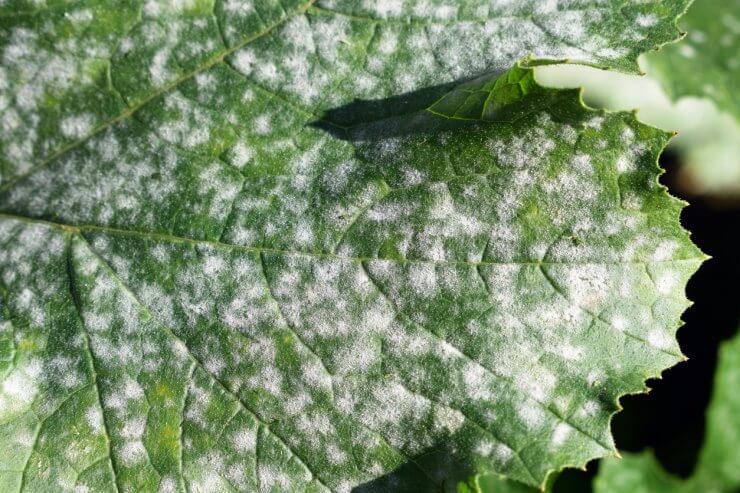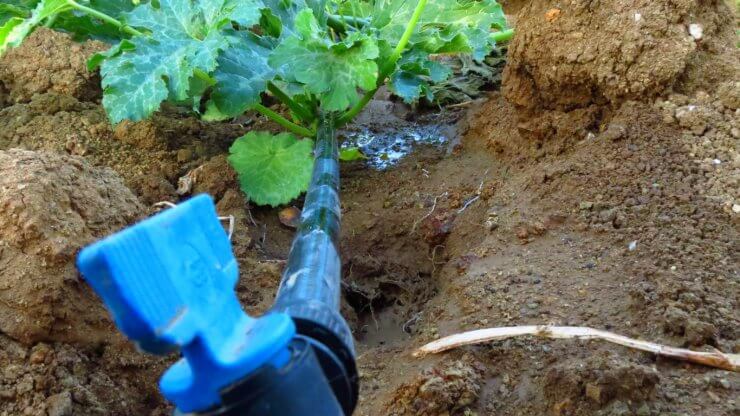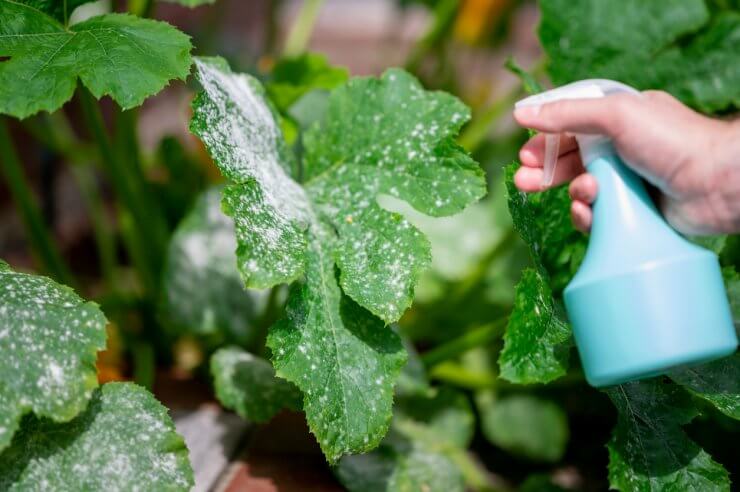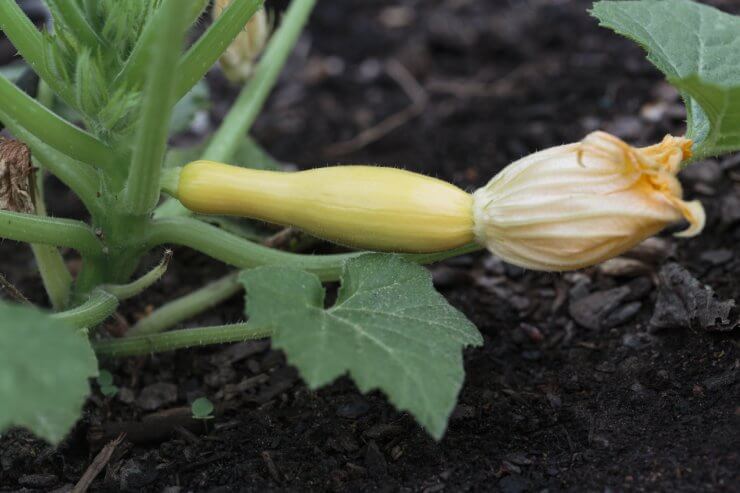
Squash is in my top five favorite vegetables and that’s partly due to the fact that it’s both a noun and a verb. You can squash a squash but you can’t tomato a tomato. Beyond my logophile feelings toward the vegetable, squash is also one of the most versatile veggies out there. There are so many ways to enjoy and store winter and summer squash. I love coming up with new recipe ideas using different types of squash. But before you can cook with it, you’ve got to grow it! Learning how to water squash plants is an essential first step on your path to delicious soups and spiralized noodles.
Discover 7 top tips for growing, harvesting, and enjoying tomatoes from your home garden—when you access the FREE guide The Best Way to Grow Tomatoes, right now!
Why do you need to learn how to water squash? Two words. Powdery mildew. Even the name grosses me out. Using incorrect watering techniques can increase your risk of powdery mildew appearing on squash plants (and other vegetables). And good luck getting rid of it. Once powdery mildew takes hold of your garden, it will take a lot of time, effort, and maybe even chemicals to get it back. And tears. There will likely be tears. But there are steps you can take to avoid this powdery mildew fate. By adjusting your watering time, method, and using other prevention strategies, you can squash out powdery mildew (see what I did there?).

Best time to water squash
Finding the best time of day to water your squash doesn’t require rocket science. The guidance is simple: don’t water squash in the evening. This is actually sound advice for all of your vegetable garden watering. If you water squash plants at night the leaves will remain damp overnight creating an ideal growing environment for powdery mildew. Ever find a month-old gym bag in your trunk that’s filled with dirty gym clothes? Just me? It’s the same principle with gardening. Keep the damp away from the dark. Instead, water squash plants in the morning so they have plenty of time to dry throughout the day.

How to water squash
Avoid watering the leaves. Direct your watering efforts to the base of your squash plants, close to the ground. Consider using a soaker hose or other drip irrigation method that doesn’t rely on overhead watering. Keeping leaves dry helps prevent powdery mildew from spreading. Watering closer to the plant’s base also prevents any powdery mildew spores from splashing up onto the squash plants.

If you see something, do something!
If you notice the beginnings of powdery mildew form on your squash plants (white or gray powdery spots) don’t panic! When you catch it early enough you can simply snip off the infected areas and throw them away. Don’t compost these clippings since the spores will spread and infect your compost pile. Also, be sure to sterilize your garden tools before and after so that you don’t risk contaminating other plants with powdery mildew spores. You can use a simple water-bleach spray for this.

Prevention is key
Learning how to water squash effectively is one way to boost powdery mildew prevention, but there are other options too! Here are a few additional strategies to prevent powdery mildew from ruining your squash recipe plans.
- Consider planting a squash variety that is powdery mildew resistant. The “Diva” cucumber, “Sunray” yellow squash, and “Wildcat” Zucchini varieties all boast resistance to powdery mildew.
- Plant squash with full sunlight exposure. Powdery mildew spores hate direct sunlight.
- Use a preventative spray made from milk, water, a few teaspoons of baking soda, and a drop or two of liquid dish soap. The general ratio is nine parts water to one part milk. Spray tops and undersides of squash plants every seven to ten days. Just like watering, spray squash in the morning to give them enough time to dry out before evening
Do you have any experience battling powdery mildew? What are your tips on how to water squash to prevent powdery mildew from popping up? Let me know in the comments!
Discover 7 top tips for growing, harvesting, and enjoying tomatoes from your home garden—when you access the FREE guide The Best Way to Grow Tomatoes, right now!





Thanks for share your information.It’s really useful.
Terrific post!
After witnessing the Mildew comeback after clipping leaves, would it be best to use a fungicide or is the milk spray fine enough? I’ve also heard of a another technique using baking soda which has me curious: Which works best?
I’ve found that milk spray works best as a preventative treatment. If mildew has really set in then look for a food safe fungicide
Interesting, I’ve been mostly using a baking soda mix which kind of works, but didn’t save one of my squash plants unfortunately. NY second plant is starting to fruit (I believe) so maybe I’ll try the milk solution in case I see the Mildew on the leaves????
Question for you, Amanda: I have seen recipes calling for milk several times to fight pest. What type of milk do you use? Will powdered milk work? Does it have to be whole milk?
M. Todd Morando, KC, KS
Actually, whole milk isn’t ideal. 2% or 1% mixed 50/50 with water is USUALLY how it’s applied in most cases. But it’s for nutrients (applied to leaves or roots), not for pests. 🙂
Is it bad to just leave the plants with the powder if they have gone too far? I’ve snipped so much already and it just keeps coming back. It’s my first time planting cucumbers and this has happened.
If you leave a plant that has “gone too far” you risk spreading powdery mildew to other plants. Sadly, sometimes its best to bite the bullet and yank the whole thing.
My squash has lots of blossoms but not seeing squash yet?
Usually the squash starts to form after the flowers wilt, do you have some other pollinating plants nearby? That will help attract the bees! 🙂